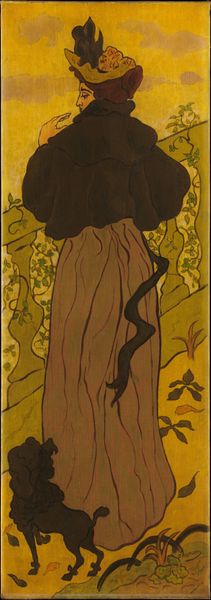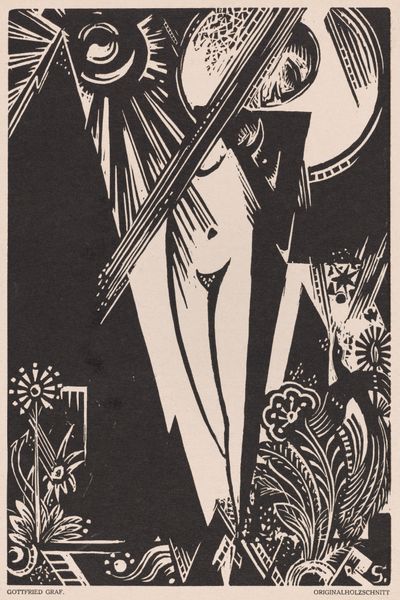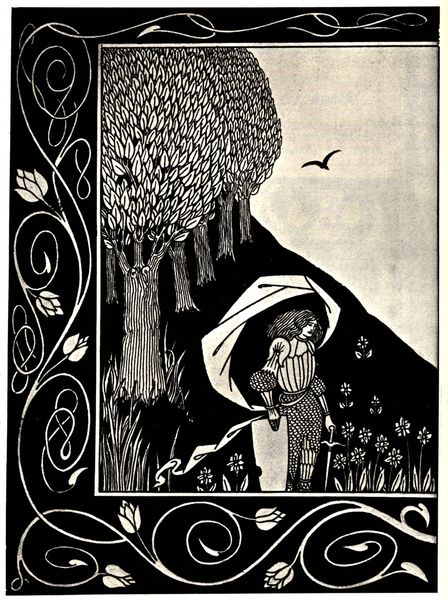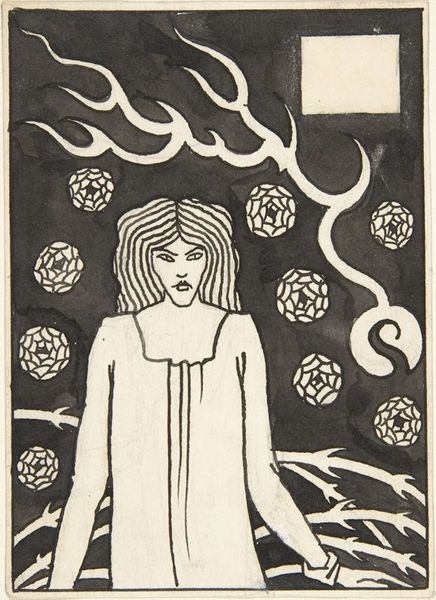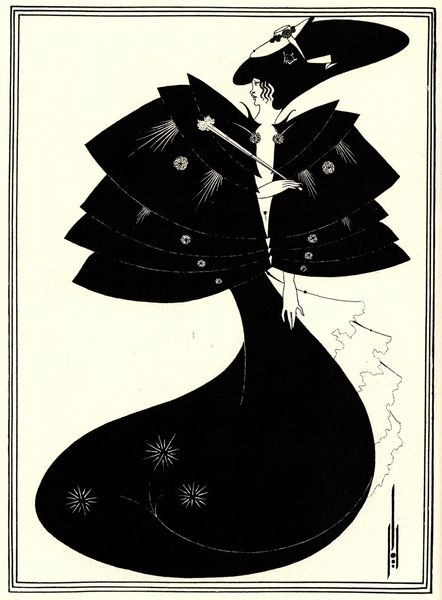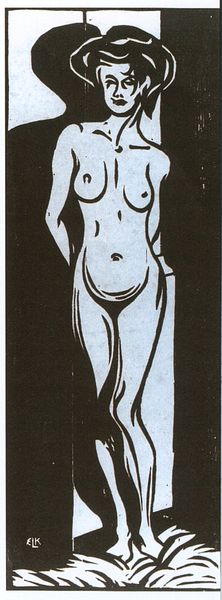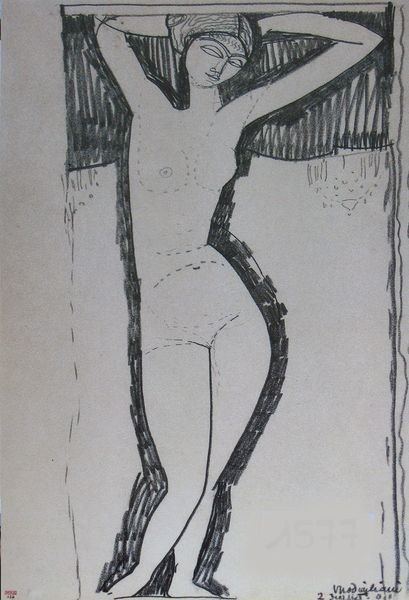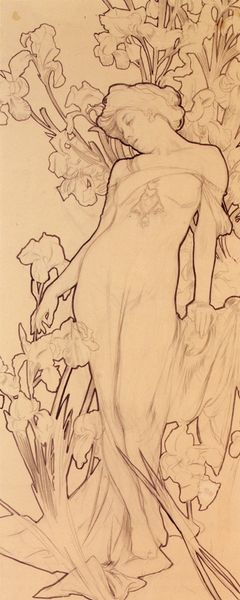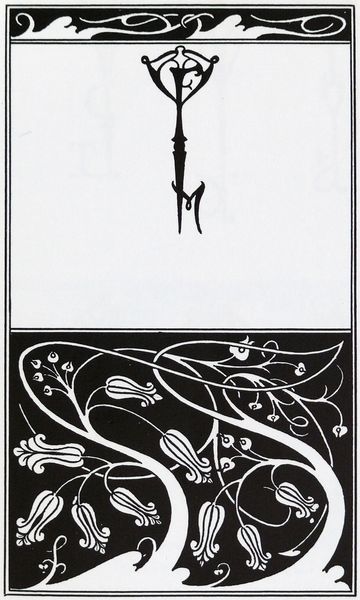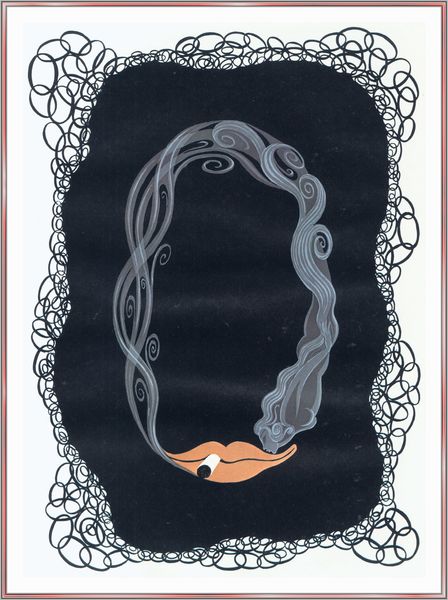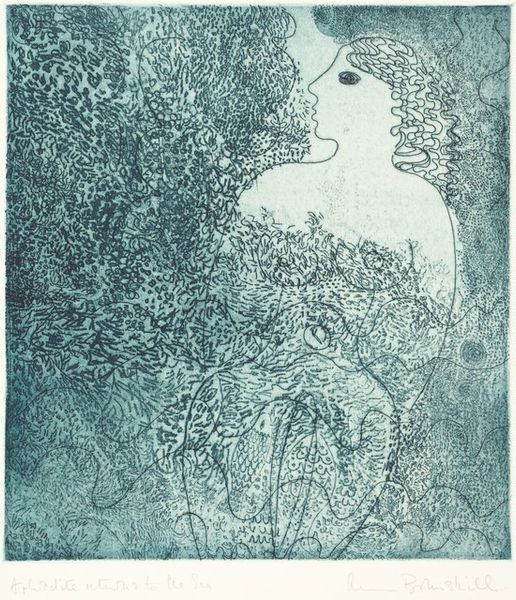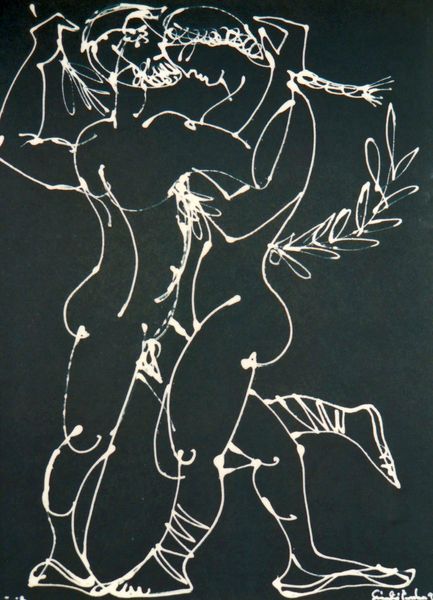
Dimensions: 11.7 x 23.5 cm
Copyright: Public domain
Editor: So, here we have Eric Gill's woodcut print "Eve" from 1929. It’s stark – just black ink on white, creating this powerful silhouette of Eve with the serpent. What’s striking is the sense of confinement within the rigid frame, as though this iconic moment of temptation is occurring in a very limited, prescribed space. How do you interpret this work? Curator: The image vibrates with symbolic tension. Note how the linear forms and sharp contrasts, characteristic of woodcut, visually amplify the inherent conflict between the organic sensuality of Eve and the angular harshness of the branches – and of the frame itself. It’s tempting to read the frame not simply as a border, but as a cage or a constriction that mirrors the loss of innocence and the dawning of self-awareness. It presents an Eden that has its limitations and an Eve who seems trapped even as she reaches. Doesn’t she almost seem caught in a trap, pinned and studied like an insect? Editor: I hadn’t thought of it that way, like an entomological specimen! It changes my sense of her power in the narrative. Curator: Exactly! And what do we make of the fact that she is looking up towards an implied space that we can’t see, towards a beyond that represents the divine. While she succumbs to earthly desires and embodiment via the snake. We often project onto her, don't we? Our anxieties of being controlled. Editor: Yes! I'm seeing those anxieties in this rendering of a traditional story, of course a rendering from a man. Curator: Indeed. And we ourselves can embody her strength when looking upon such charged visual stories, using Eve not as an archetype of the downfall but an icon of resilience. Editor: Thanks. I see now, seeing beyond my reading into seeing all those around who view too.
Comments
No comments
Be the first to comment and join the conversation on the ultimate creative platform.
